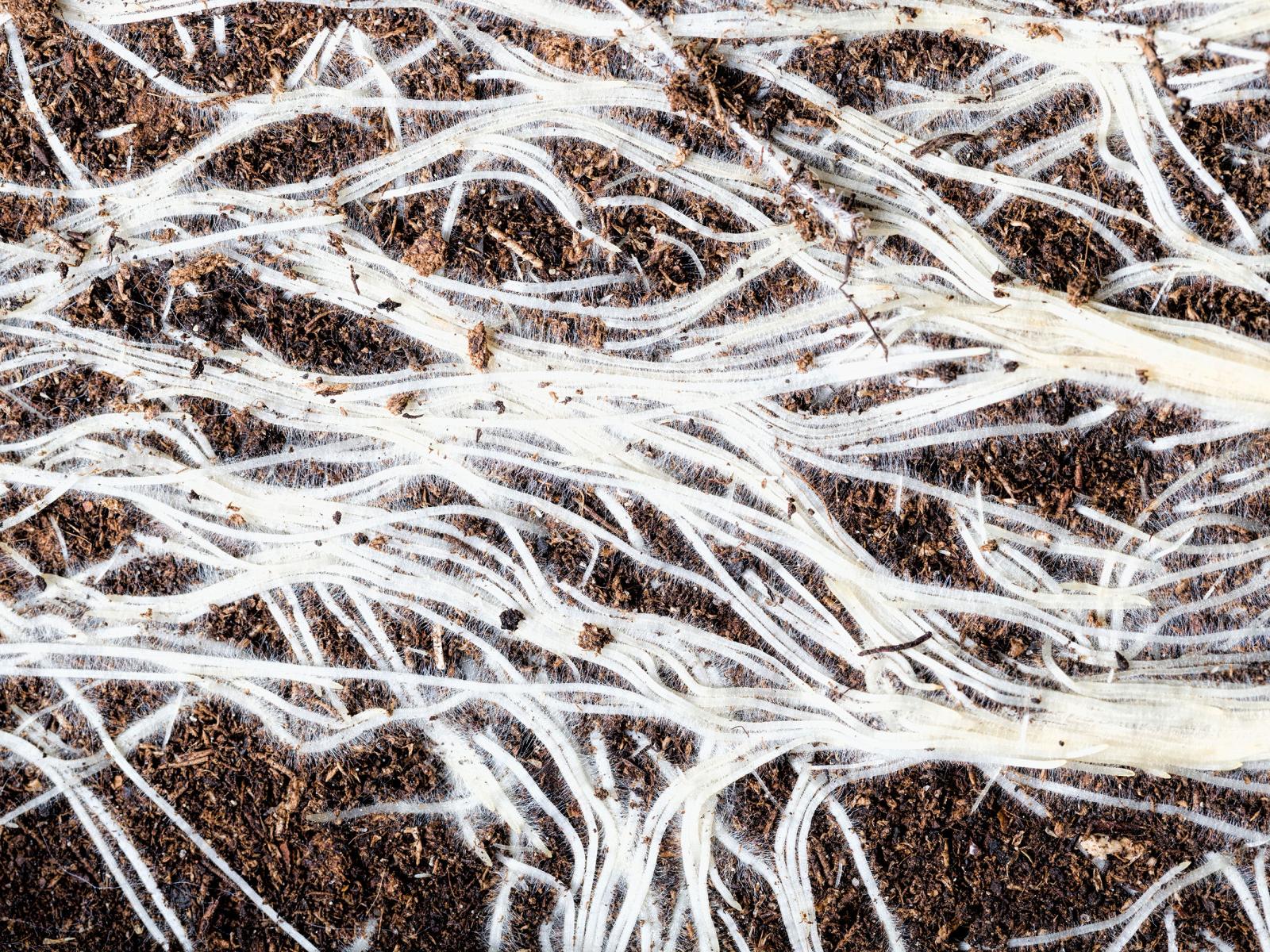A New Tool to Dig into the Rhizosphere
Scientists experiment with new approach that yields greater information on the thin strip of soil associated with plant roots, the rhizosphere

Using a new approach, scientists studied the narrow band of soil around plant roots to gain a better understanding of the processes important to agriculture and the movement of carbon in the environment.
(Image by rsooll | Shutterstock.com)
The Science
The slim layer of soil surrounding plant roots, called the rhizosphere, is a highly dynamic zone that connects plant roots with needed nutrients. In the rhizosphere, roots release organic carbon and other compounds that help shape how microbial communities function. However, because the rhizosphere is so narrow, it can be hard to study. A new analysis approach allowed scientists to use a tiny amount of sample to yield a greater amount of information on how this vital region processes carbon, a key element associated with climate change.
The Impact
The rhizosphere may be small, but it has a disproportionally large impact on plant success. It is where plants take in nutrients, find protection from disease, and maintain moisture. The strong link between effective rhizosphere processes and resulting plant health has important implications for plant productivity in both nature and sustainable agriculture. The important role of the rhizosphere highlights the need to gain a better understanding of its functioning, particularly in the area of carbon processing.
Summary
Scientists coupled laser ablation sampling, which peels off tiny bits of the rhizosphere, with an emerging tool, capillary absorption spectroscopy. The tool differs from conventional techniques in that it requires less sample per analysis. It is also small enough it might be usable in the field instead of a laboratory. To test the performance of the new approach, the scientists compared their findings to data from advanced isotope ratio mass spectrometry at EMSL, the Environmental Molecular Sciences Laboratory, a Department of Energy (DOE) user facility. The results were comparable, although the new approach had greater resolution. The approach could be used to help scientists better understand key processes in the rhizosphere that could improve agriculture, sequester carbon in soil, and keep plants and soil microbes healthy.
Contacts
James Moran
james.moran@pnnl.gov | moranja7@msu.edu
EMSL | Michigan State University
Tim Linley
kasnykubay@outlook.com
Pacific Northwest National Laboratory (retired)
Daniel Cleary
dcleary@pusan.ac.kr
Pacific Northwest National Laboratory
Funding
Development and testing of the new tool were funded by the DOE Office of Science, Biological and Environmental Research, Small Business Technology Transfer program and the Early Career Research program. Additional support was provided by the Great Lakes Bioenergy Research Center, National Science Foundation, and Michigan State University AgBio Research. A portion of this research was conducted at EMSL, the Environmental Molecular Sciences Laboratory, a DOE Office of Science user facility.
Publications
J.J. Moran, et al., “Spectroscopy-based isotopic (δ13C) analysis for high spatial resolution of carbon exchange in the rhizosphere.” Rhizosphere 23, 100564 (2022). [DOI: 10.1016/j.rhisph.2002.100564]
Published: January 5, 2023